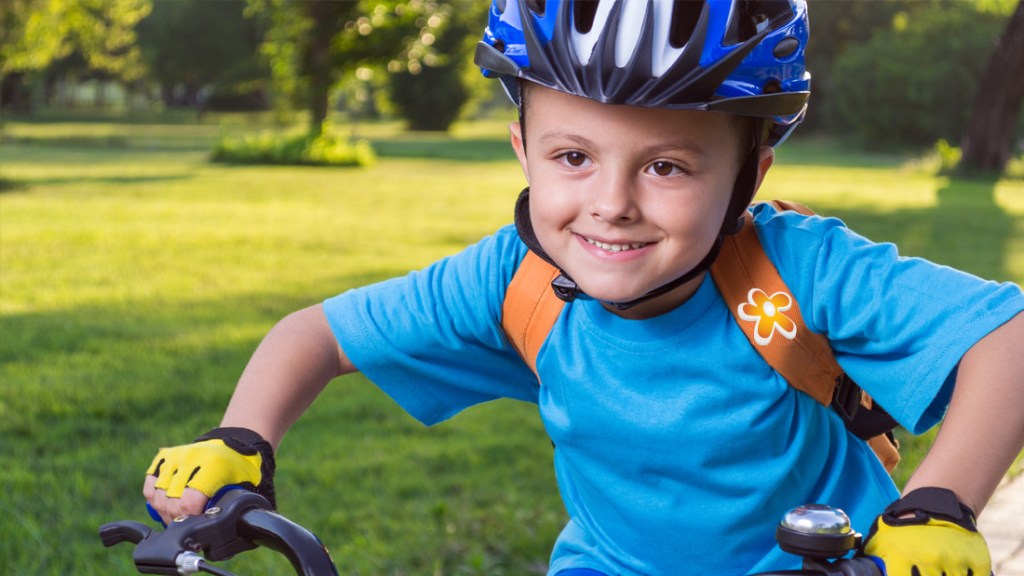After being cooped up during the winter storms, we want to enjoy the great outdoors. Now is the time to plan for bike riding, one of the best lifetime fitness skills for your child. Parents often ask: When is my daughter ready to learn to ride a bike? How do I know what bike to get for my son?
Most children start with riding toys and tricycles. Some children are ready to ride a bike at 3, others at 6, depending on their interest and motor skills. Your first task is to choose a bike with foot brakes that is just the right height and weight. Since a bike that is too tall or heavy can be scary, avoid using a bike that she can “grow into,” even when the price and value are tempting. According to outdoor gear retailer REI, getting a bike that is too large or unwieldy can slow down or even completely stop the learning process. You want a bike sized so your son or daughter can plant their feet on the ground when seated.
Your next task is to make sure that your child has a helmet that fits securely while allowing him or her to see well. Avoid helmets that must be “tipped” for fit or vision. Make sure that your child is wearing appropriate clothes – long pants, no baggy clothing or loose shoelaces. You may need to tuck shoelaces in before starting.
And finally, the task that might be hardest here in our mountains – finding a level place to learn and practice! A neighborhood cul-de-sac can work if you are vigilant about monitoring traffic. The momentum provided by a slight decline can help your child learn to pedal and balance. A safer option is to practice in a school parking lot, many of which are level and have little traffic after school and on the weekends. You can even purchase orange cones at a discount store to block off your practice area. As your child’s skills improve, use the cones as fun props for distance and steering.
Most children start with training wheels, which help train the pedaling motions and build endurance. But for balance, the training wheels must come off! REI recommends that you also remove the pedals (be sure to label them because the left usually removed by turning clockwise instead of counter clockwise) and allow your son or daughter to push the bike with feet on the ground. As confidence improves, show them how to coast and turn with feet off the ground and eyes looking ahead. When your child has mastered those skills, you are ready to put the pedals back on and help him or her learn how to balance, steer, and brake.
Some children learn to ride bikes without using training wheels. Baby Center, L.L.C. recommends learning to ride a bike with handbrakes on a long, slightly declined grassy surface. If you are lucky enough to have such an area available, you can view their video at the website below to see if their teaching method would be appropriate for your child.
Despite your best efforts and your child’s ideal cooperation, he or she may have coordination problems or fears that make it difficult to master bike riding. Our physical therapists can help! Call our office to request a PT referral, or ask your doctor to write a “PT-Evaluate and Treat” order. We want your child to enjoy the lifetime benefits of riding a bike, and we are experts at making therapy fun!
Resources: REI | Baby Center, L.L.C.
Teaching Your Child How To Ride A Bike
Laura Knight, PT, MPT



